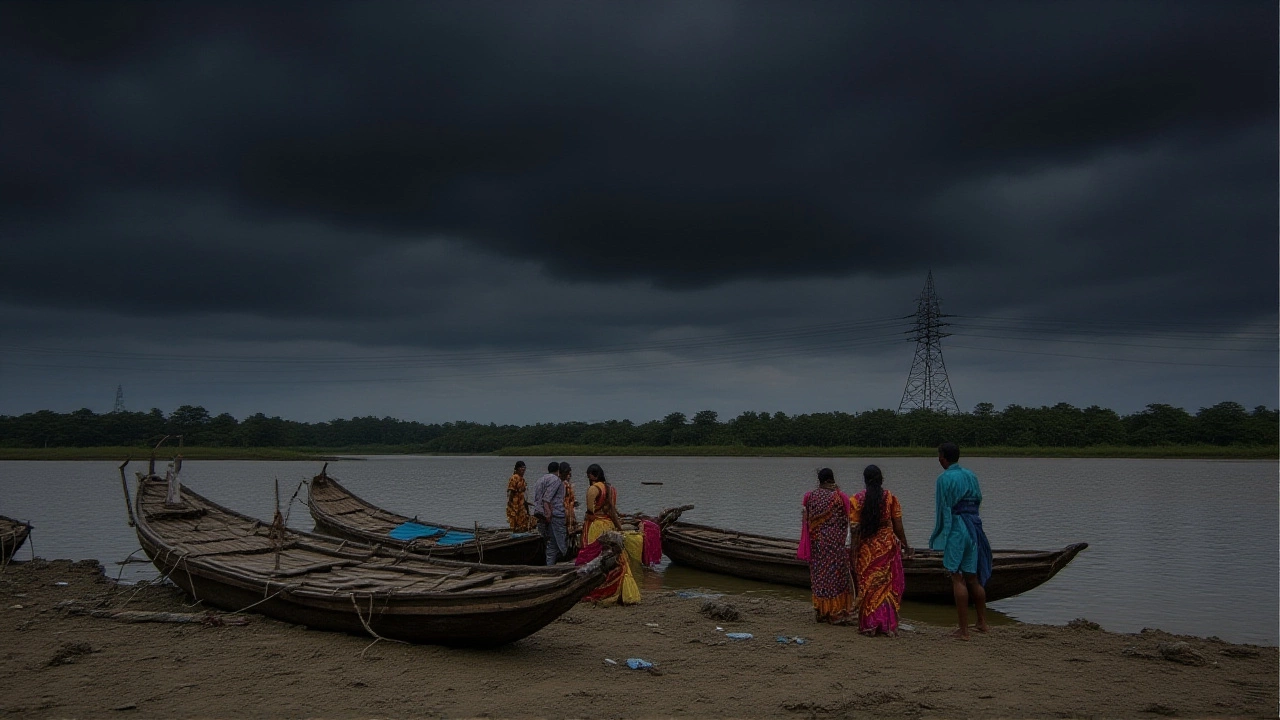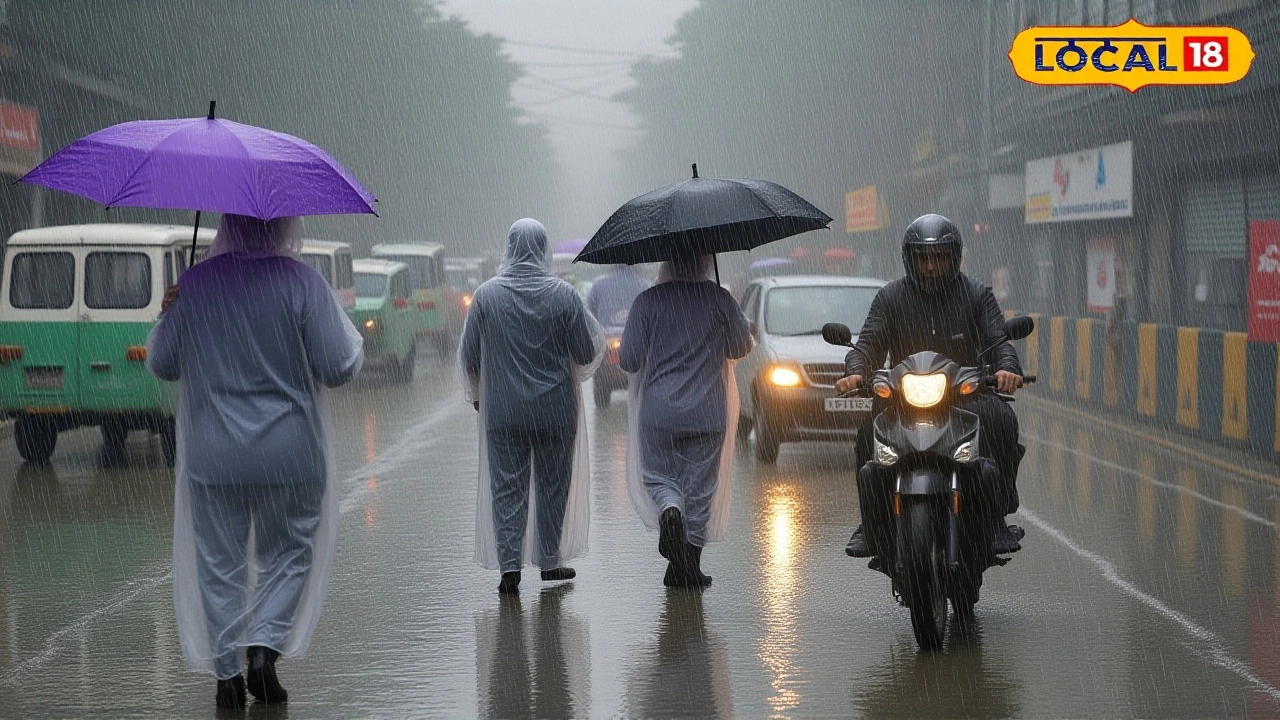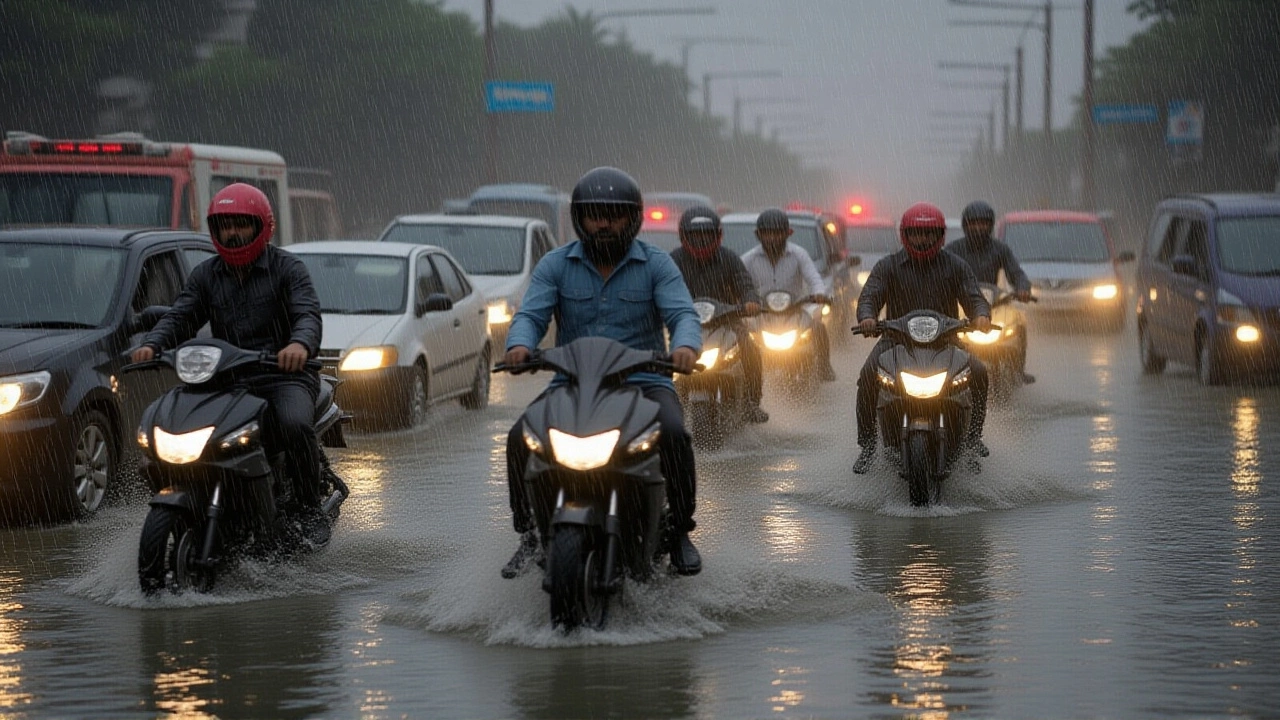When India Meteorological Department released its latest outlook on Monday, October 6, 2025, residents of Delhi braced for an unexpected deluge. The agency flagged heavy rainfall across eastern and central India and warned that a wet spell would hit the capital and neighbouring cities — Gurugram, Ghaziabad and Noida — beginning early on October 5. An orange alert was issued for Delhi and Gurugram, while the other two cities received standard weather advisories.
What the Forecast Shows
The bulletin predicts thunderstorms and gusty winds reaching 30‑40 km/h, with occasional bursts up to 50 km/h across the Delhi‑NCR region on October 6. Day‑time temperatures are expected to dip to 31‑33 °C, roughly three degrees below the seasonal norm, while night‑time lows will hover between 23‑25 °C. The rain‑‑heavy phrase isn’t just for the capital; Odisha logged "extremely heavy" totals in isolated spots, and coastal Andhra Pradesh saw showers ranging from heavy to very heavy.
How the Weather System Developed
Two distinct systems are colliding. A classic western disturbance — a band of moisture that travels eastward from the Mediterranean — is steering rain toward northern India. At the same time, a deep depression rolled ashore near Gopalpur on the evening of October 2, lashing the coast with gusts up to 73 km/h. Adding to the drama, Cyclone ShaktiMaharashtra lingered offshore, pushing additional moisture toward the central and western seaboard.
Earlier in the week, Delhi‑NCR enjoyed two calm days with partly cloudy skies and highs of 33‑36 °C. By Friday, the sky had started to thicken, and on Saturday the first light showers hinted at the approaching disturbance. The rapid shift from tranquil to turbulent caught many commuters off‑guard, especially those who had planned outdoor events for the weekend.
Impact on Delhi‑NCR and Other Regions
Authorities responded quickly. The National Disaster Management Authority (NDMA) coordinated with local municipal corporations to pre‑position sandbags in low‑lying neighborhoods. Traffic on the Delhi‑Gurgaon Expressway slowed to a crawl as water pooled near the Toll Plaza, prompting police to reroute several bus routes. Schools in Gurugram were dismissed early, and the Delhi Metro announced temporary service suspensions on the Yellow Line between Huda City Centre and Rajiv Chowk.
Beyond the capital, the eastern states felt the brunt of the system. In Jharkhand, the town of Ranchi recorded 112 mm of rain in a 12‑hour window, triggering minor landslides on the outskirts. Chhattisgarh reported gusts of 45 km/h that snapped tree branches in Raipur’s urban core.

Expert and Government Responses
Dr. Ananya Singh, senior climatologist at the Indian Institute of Tropical Meteorology, told reporters, "The convergence of a western disturbance with a lingering cyclone is a textbook case of compound extreme events. It amplifies rainfall intensity and expands the affected area." She added that climate models suggest such overlaps could become more frequent as sea‑surface temperatures rise.
Delhi’s Chief Minister, Arvind Kejriwal, addressed a press conference, stating, "We are mobilising city resources to protect vulnerable communities. Residents should stay indoors, avoid water‑logged roads, and follow official alerts." The Delhi Police also issued a notice urging drivers to keep headlights on and maintain a safe distance from stalled vehicles.
Looking Ahead: What to Expect
The IMD’s forecast extends the rain band through the forenoon of October 7, after which a high‑pressure system is expected to restore clearer skies. However, residual moisture could keep humidity levels above 80 % in the capital for the rest of the week, making the air feel “sticky” despite lower temperatures.
For the broader October season, climatologists note that Delhi typically sees around 13 mm of rainfall, with about 11 hours of sunshine per day. This year’s early wet spell may shave a few sunny hours off the average but also brings a welcome relief from the lingering heat that peaked at 38 °C earlier in September.

Key Facts
- Orange alert issued for Delhi and Gurugram on October 6, 2025.
- Rainfall expected to reach up to 50 mm in isolated locations of Odisha.
- Wind gusts recorded at 73 km/h near Gopalpur as the depression crossed the coast.
- Cyclone Shakti continues to affect Maharashtra’s coastline, adding to regional moisture.
- Daytime highs in Delhi will fall to 31‑33 °C, three degrees below normal.
Frequently Asked Questions
How will the rain affect daily commuters in Delhi?
Water‑logged roads and reduced visibility are expected on major arteries like the Ring Road and the Delhi‑Gurgaon Expressway. The Delhi Metro has already suspended service on the Yellow Line for several hours on October 6, and bus operators are rerouting services. Commuters are advised to allow extra travel time, use alternative routes, or consider remote work where possible.
What caused the unusually heavy rain in Odisha?
A deep depression moved ashore near Gopalpur on October 2, drawing moist air from the Bay of Bengal. Combined with the lingering western disturbance, the system intensified, dumping up to 112 mm of rain in some districts within 24 hours.
Is Cyclone Shakti expected to hit the Indian mainland?
Meteorologists say Shakti will stay offshore, skirting Maharashtra’s coast while generating high surf and heavy rain in coastal districts. The cyclone’s outer bands are feeding moisture into the larger system that is already affecting the Delhi‑NCR region.
What steps should residents take to stay safe?
Stay indoors during the heaviest downpours, avoid walking through flood‑water, and keep emergency supplies like flashlights and a first‑aid kit handy. Follow updates from the India Meteorological Department and local authorities for real‑time alerts.
Will the rainfall affect upcoming festivals in October?
A few regional festivals like Navratri fall later in the month, and organizers are already planning for possible rain‑related disruptions. So far, major public events scheduled for the first week of October have been postponed or moved indoors.
